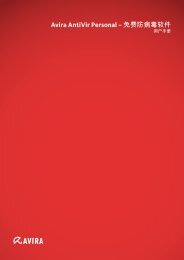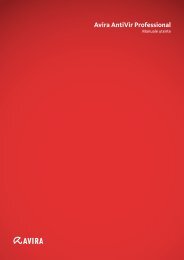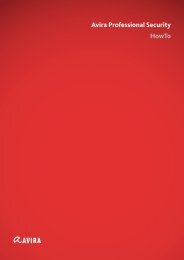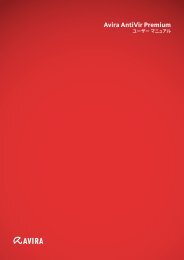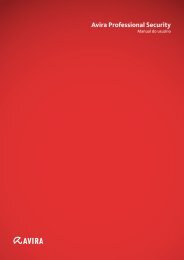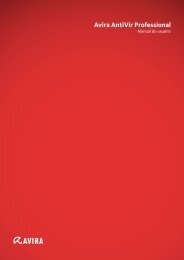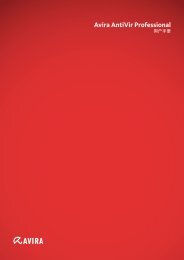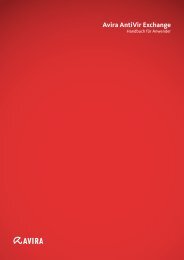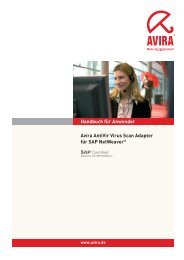User Manual
User Manual
User Manual
Create successful ePaper yourself
Turn your PDF publications into a flip-book with our unique Google optimized e-Paper software.
Reference: Configuration options<br />
by Web Protection: For all entries on the exclusion list, the entries on the list of<br />
file and MIME types to be blocked are ignored. No scan for viruses and<br />
malware is performed.<br />
MIME types: Examples for media types:<br />
� text = for text files<br />
� image = for graphics files<br />
� video = for video files<br />
� audio = for sound files<br />
� application = for files linked to a particular program<br />
Examples of excluded file and MIME types:<br />
� audio/ = All audio media type files are excluded from Web Protection scans<br />
� video/quicktime = All Quicktime sub-type video files (*.qt, *.mov) are excluded<br />
from Web Protection scans<br />
� .pdf = All Adobe PDF files are excluded from Web Protection scans.<br />
Add<br />
Delete<br />
The button allows you to copy MIME and file types from the input field into the display<br />
window.<br />
The button deletes a selected entry from the list. This button is inactive if no entry is<br />
selected.<br />
URLs skipped by Web Protection<br />
All URLs in this list are excluded from Web Protection scans.<br />
Input box<br />
In this box you can input URLs (Internet addresses) to be excluded from Web<br />
Protection scans, e.g. www.domainname.com. You can specify parts of the URL,<br />
using leading or following dots to indicate the domain level: .domainname.com for all<br />
pages and all subdomains of the domain. Indicate websites with any top-level domain<br />
(.com or .net) with a following dot: domainname.. If you indicate a string without a<br />
leading or concluding dot, the string is interpreted as a top-level domain, e.g. net for<br />
all NET domains (www.domain.net).<br />
Note<br />
You can also use the wildcard * for any number of characters when specifying<br />
URLs. You can also use leading or following dots in combination with wildcards<br />
to indicate the domain level:<br />
Avira Professional Security - <strong>User</strong> <strong>Manual</strong> (Status: 30 Mar. 2012) 166



